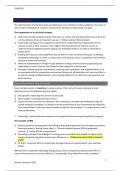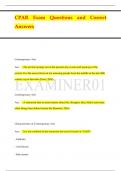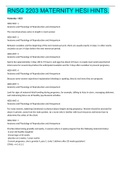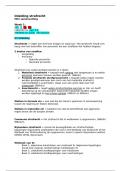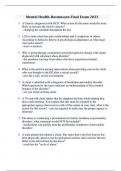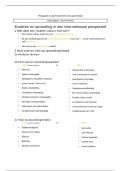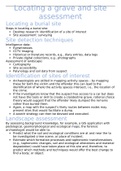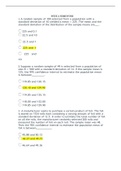Resume
Samenvatting Strategic Management
- Cours
- Strategic Management
- Établissement
- Katholieke Universiteit Leuven (KU Leuven)
Beste, Met dit document weet je exact wat te leren voor het vak Strategic Management. Het is heel gestructureerd, dus je gaat er door heen vliegen ;) Veel succes! Maxine Vermeiren
[Montrer plus]
